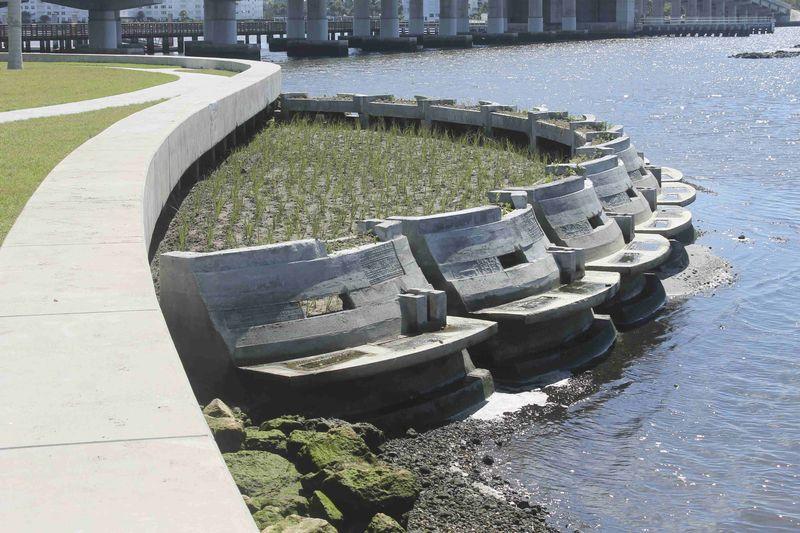In a growing trend that seeks to blend art with environmental restoration, a water filtration project was unveiled on Tuesday along a 575-foot sea-walled stretch of the intracoastal waterway in South Florida in the US.
The new Living Shoreline, designed by Vermont artist Michael Singer, is billed as “Eco-Art,” which its patrons describe as “art with a job to do.”
The $149,000 project grew out of Palm Beach County’s work to improve water quality in the Lake Worth Lagoon which, in typical Florida fashion, previously involved piling up rocks in front of seawalls to try to regenerate some of the natural marine habitat lost to development, reports Reuters.
Singer’s proposal to improve the aesthetics in collaboration with biologists and marine engineers received a $40,000 grant from the National Endowment of the Arts.
The Living Shoreline featured a half-moon shaped porous concrete planter for mangrove trees whose exposed root system naturally serves as a fish nursery. The planter is flanked on both sides by long shelves set at the optimum water level on the lagoon’s seawall to grow oyster beds. Jason Bregman, a designer with Michael Singer Studios, said this kind of Eco-Art is underpinned by knowledge of scientific and engineering requirements. In that way, it differs from other types of environmental art created to make a statement, or which uses the environment solely for the artist’s needs.
“The piece has to actively be doing something in the environment to make it better,” Bregman said, adding: “It’s a relatively new trend especially at this level where the public can see it, and engage with it and understand it.”
An early example of Eco-Art was sculptor Mel Chin’s 1990 Revival Field, a toxic dump in Minnesota that he fenced off to look like a target and worked with a government scientist to grow plants to absorb the heavy metals in the soil.
More recently, supporters worked through a group called Eco-Art South Florida, which they said was the only organization dedicated to the interventionist style. Their work has been taken over by the Florida International University.
Among other projects supported by the group was Singer’s 40-foot sculptural Biofiltration Wall built on the Seminole Indian Tribe’s casino in Coconut Creek, just north of Fort Lauderdale. The wall filters 150,000 gallons of water a day from a nearby retention pond, removing nutrients that could cause algae blooms, which kill fish downstream.


